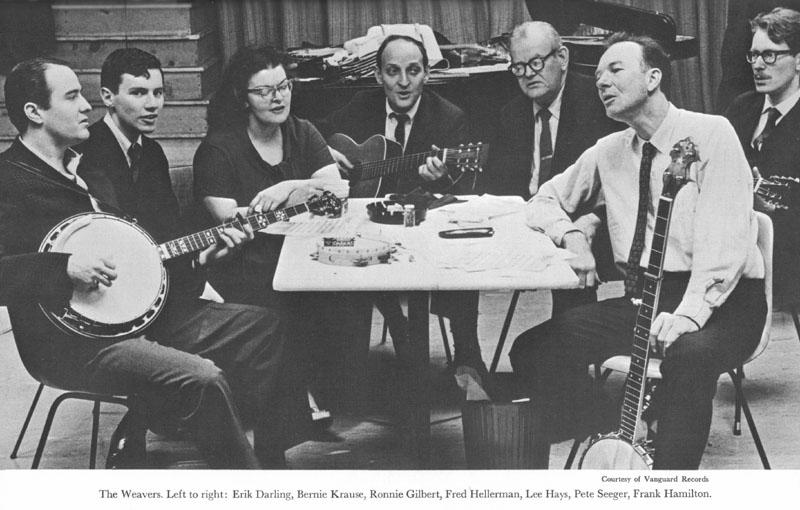
Tzena, Tzena, Tzena-Pop Hit, #2 reached charts in 1950 originally written in Hebrew by Issachar Miron and Jehiel Hagges later arranged by Gordon Jenkins, whose orchestra backed the Weavers' version recorded in New York City on released by Decca Records as catalog number 27077 the A-side of Goodnight, Irene.Goodnight, Irene-Pop hit, #1 first reached charts on J25 weeks in top 100 from a version popularized by Lead Belly in the 1940s recorded in New York City on released by Decca Records as catalog number 27077 the B-side of Tzena, Tzena, Tzena.Hit singles in approximate chronological order Finally deciding to disband, they were in a sense reincarnated as the Weavers, who also had a politically progressive philosophy and who, like the Almanac Singers, supported union activities and social justice. The political orientation of the Almanac Singers had been notably leftist and labor-oriented and had suffering accordingly during the highly patriotic years of World War II. Originally based in New York City, the Weavers were formed in Greenwich Village in November 1948 by Seeger and Hayes, veterans of an earlier group called the Almanac Singers, who had performed sporadically in the early 1940s with various other artists, the most noted of whom were Cisco Houston and the great folk-song composer Woody Guthrie. Sails and Sloop John B), The Rock Island Line, The Midnight Special, Pay Me My Money Down, and Darling Corey. Many of the songs that the Weavers sang on recordings and at concerts are now considered standards in the folk repertoire, including The Sinking of the Reuben James, Hard, Ain't It Hard, On Top of Old Smokey, Follow the Drinking Gourd, Kisses Sweeter than Wine, The Wreck of the John B (also known as The John B. The composition of the Weavers' four members (always three men and one woman) varied somewhat over the years, but the original group comprised Pete Seeger, Lee Hays, Fred Hellerman, and Ronnie Gilbert. Although their commercial success was later eclipsed by such acts as the Kingston Trio and Peter, Paul and Mary, they nevertheless sold millions of records of their own and were acknowleged by all that followed as being the seminal force in the folk-music field. Along with their guitars, banjos, and other folk instruments, many of their studio-recorded performances also had lush orchestrations behind them, as was typical for much of their era. Their repertoire was broad, drawn from traditional black gospel music, children's songs, the blues, and other sources such as the labor movement. Like their noted contemporary Burl Ives, they not only sang traditional American folk songs but also introduced songs from around the world.

The Weavers were an extremely popular American folk music quartet of the 1940s through 1960s who not only had numerous hits of their own, but were important in being precursors of the great folk-music craze of the late 1950s that introduced such artists as the Kingston Trio, Joan Baez, and Peter, Paul and Mary. 1 Hit singles in approximate chronological order.


 0 kommentar(er)
0 kommentar(er)
